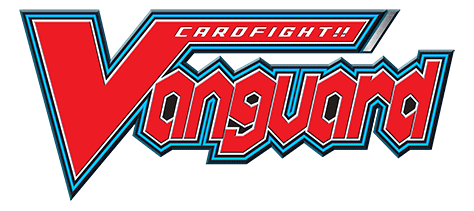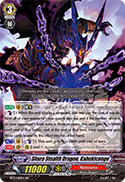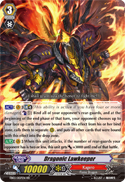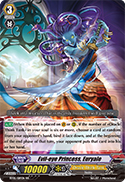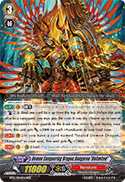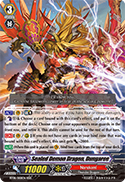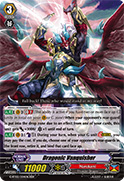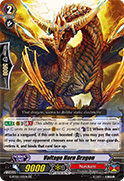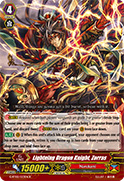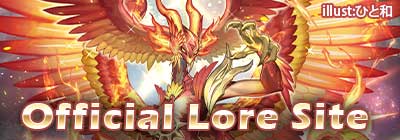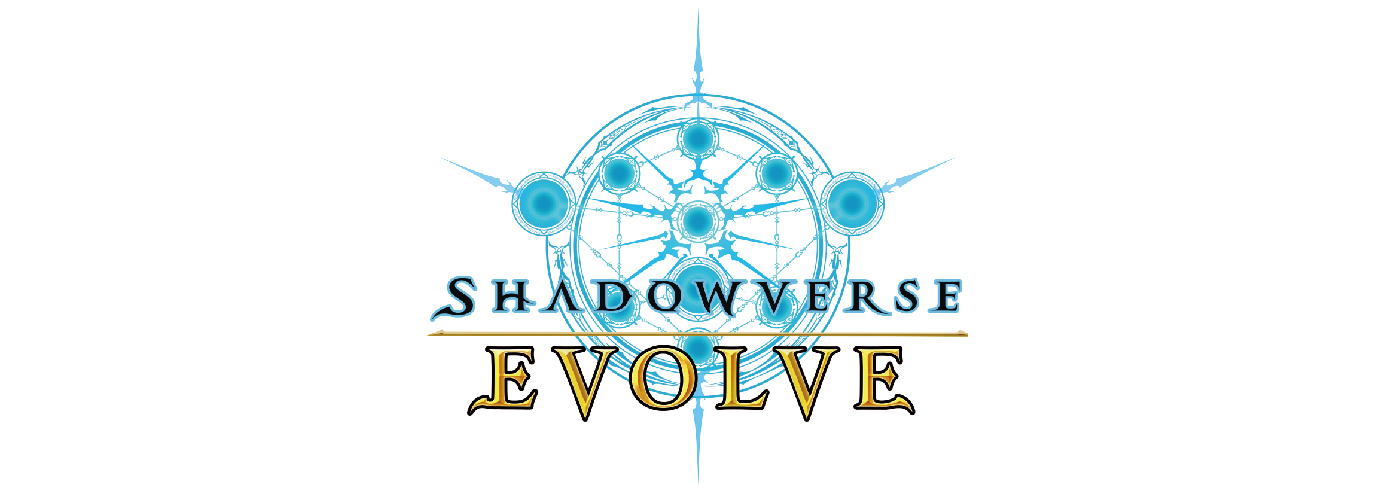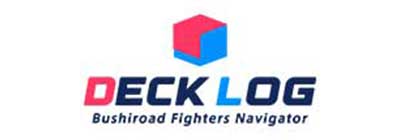|
Tweet |
Into the Abyss – The Bind Zone
The bind zone is an abyss that traps cards within its boundaries, and prevents either player from directly using them. It is a unique area which has not been widely used by many clans, but has had an impact on play nonetheless.
In the past, few cards interacted with the bind zone directly. There were Evil-eye Princess, Euryale and Dragonic Lawkeeper, followed by a host of Nubatama cards like Shura Stealth Dragon, Kabukicongo, which bind the opponent’s cards from the field or from their hand, to reduce their options in guarding.
Then, there were offensive cards that made use of this zone: Sealed Demon Dragon, Dungaree could retire the opponent’s front row rear-guards with its ability, using cards in the bind zone as ammunition. At the same time, its crossride Demon Conquering Dragon, Dungaree “Unlimited”, gains a large boost in power per card in the bind zone. In Tachikaze, there is also Destruction Dragon, Dark Rex that allowed the player to superior ride it when it is in the bind zone during the battle phase, enabling the player to attack again with his or her vanguard.
More recently, new cards in Narukami such as Lightning Dragon Knight, Zorras, Voltage Horn Dragon and Dragonic Vanquisher have been able to bind cards from the opponent’s drop zone.
This tactic slowly strangles the opponent’s drop zone as the player can bind key cards like the new Sentinels from G-BT01 Generation Stride onwards, trigger and legion mate against decks that use Legion, or even block Granblue or Neo Nectar decks.
With the advent of G-CMB01 Vanguard & Deletor and the introduction of Vanish Delete, understanding the bind zone has become ever more important! Without further ado, let’s get to it.
The bind zone is a public zone where all bound cards are placed. This means that all players can refer to any face-up cards in it.
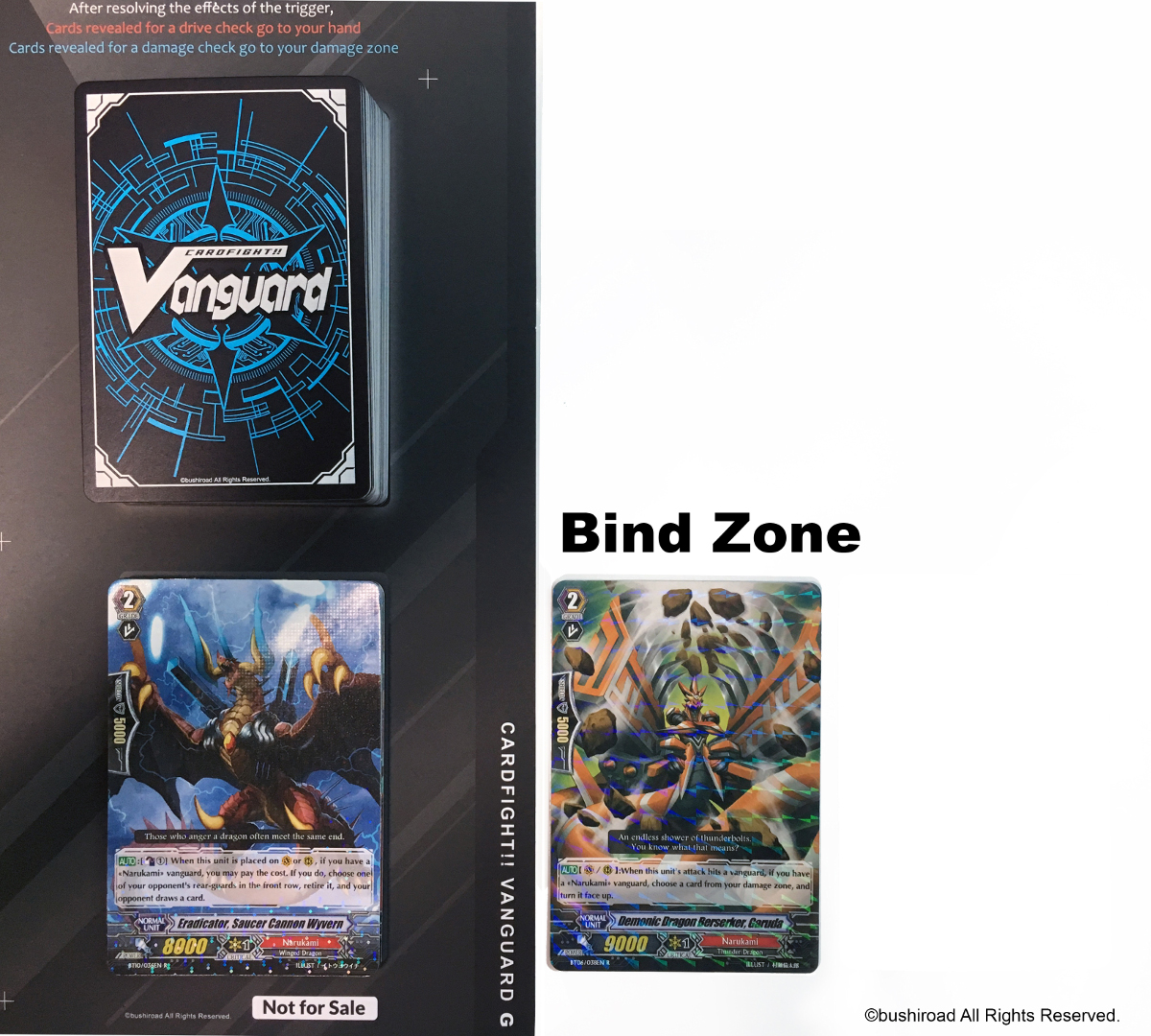
A card is placed in the bind zone outside of the playmat.
Notice that I mentioned “face-up cards”. By the effects of some cards, cards in the bind zone can potentially be face-down instead of face-up. Information on face-down cards can only be referred to by the owner of that card. Apart from that, the only other difference between the two types is that face-up cards retain all information and text on them, but face-down cards have no information, and cannot be given any information.
This is particularly important to note against cards that bind cards from the hand face-down, like Euryale. If your opponent binds your cards with Euryale or a similar effect from your hand face-down, only you can check the contents!
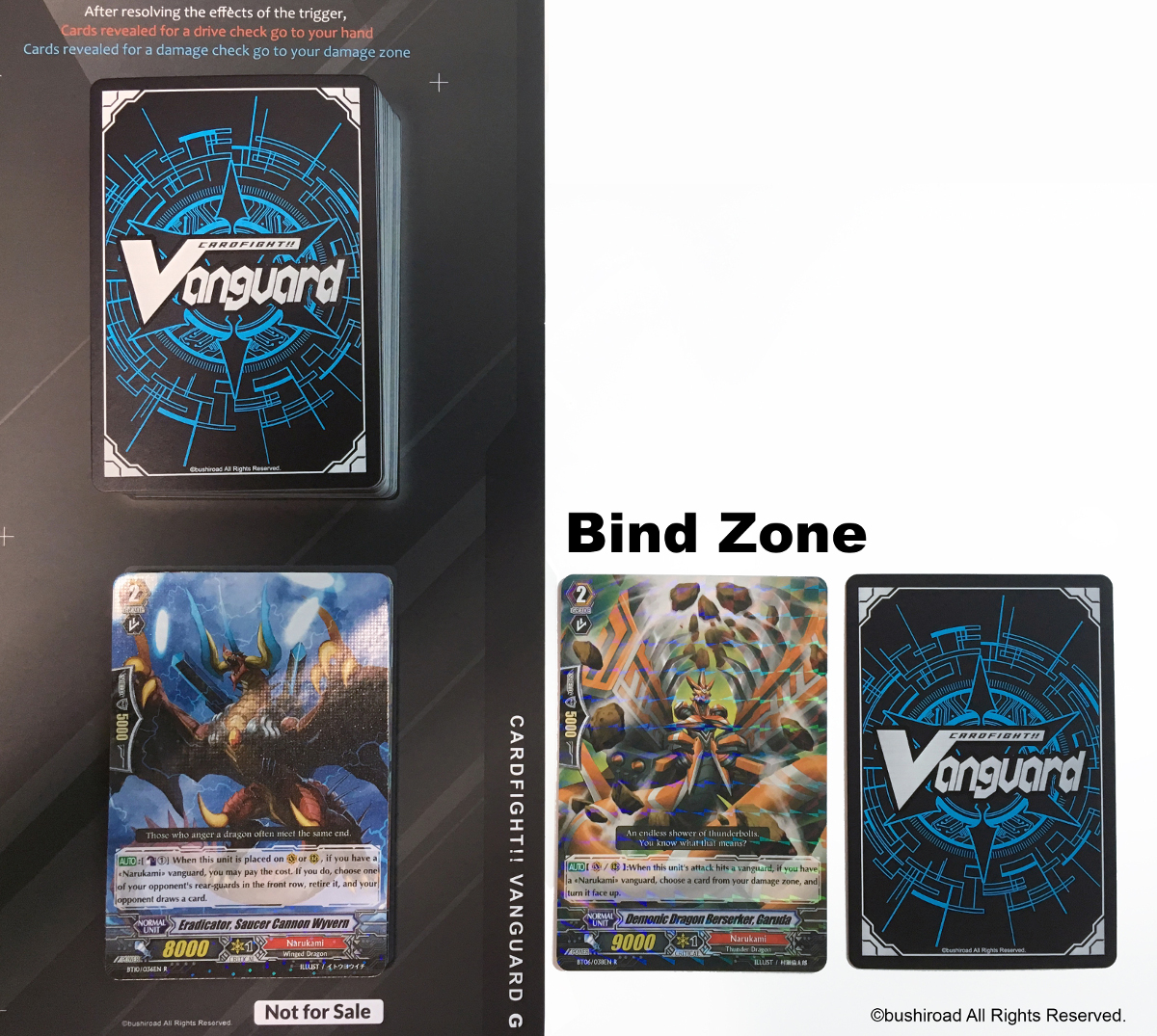
Another card is placed in the bind zone face-down, due to the ability of Evil-eye Princess, Euryale:
“…choose a card at random from your opponent’s hand, bind it face down, …”
All cards in the bind zone, where necessary, must separate and organize the cards that are bound into distinct piles. This is because, certain cards like Sealed Demon Dragon, Dungaree, have abilities that may reference cards in the bind zone. To prevent confusion, all bound cards must be segregated properly so that all players can discern which was bound by what. Each player has a separate bind zone, too!
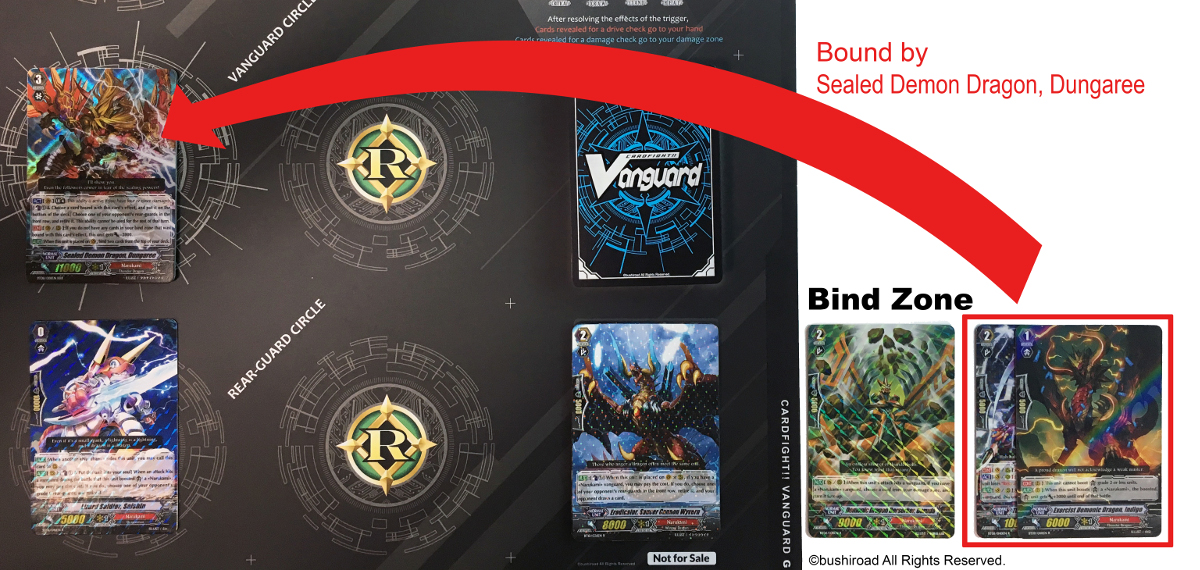
2 Cards are placed in the bind zone in a separate pile, due to Dungaree’s ability:
“[AUTO]:When this unit is placed on (VC), bind two cards from the top of your deck.”.
Do keep all this information in mind when facing a clan that can bind your cards! There’s been an increase lately in cards that can bind the opponent’s cards, so I’m looking forward to see what new, powerful effects will interact with the bind zone in the coming boosters!

Ronin
The Wandering Columnist
An avid card gamer who dabbles a little in every card game he can get his hands on. Considers weakness a sin. Thinks that the weak ones should just go home.
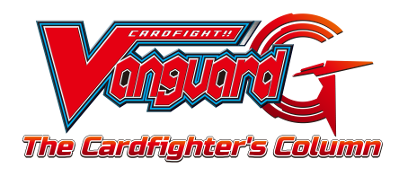
The Cardfighter’s Column publishes every Friday, featuring Cardfight!! Vanguard news, card insights, event updates and more!
Do you have any suggestions? What would you like to see in future column articles? Drop us a line on Facebook or through email at sg_support@bushiroad.com!
